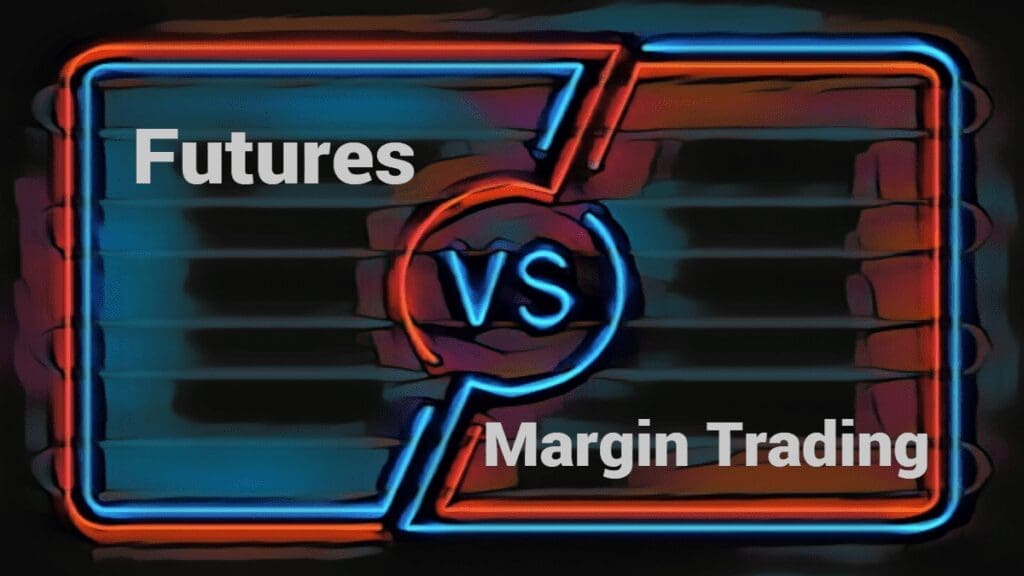Futures and margin trading are popular derivatives when it comes to investing. But what are the differences between them? And which one is best for you? In this article, we’ll delve into the details of both margin trading and futures so that you can better understand their differences and determine which one is a better fit for your investment strategy.
We’ll look at what each of these derivatives involves and discusses the potential risks associated with each as well as the techniques used by traders in order to maximize profits. By the end of this article, you’ll have a good understanding of both margin trading and futures and be able to make an informed decision about which one is best for your needs.
How does margin trading work
When it comes to trading financial instruments, there are a few different ways that you can choose to do so. One of these is margin trading. Margin trading allows you to trade with leverage, using borrowed money from your broker. This can be a great way to increase your potential profits – but it also comes with risk. In this article, we’re going to take a look at how margin trading works, and compare it to another type of trading called futures.
When you trade on margin, you’re essentially borrowing money from your broker in order to trade. The amount of money that you can borrow will depend on the broker that you’re using, but will typically be around 50% of the value of the trade. So, if you wanted to buy $10,000 worth of stock on margin, you would only need to put up $5,000 of your own money – the other $5,000 would be borrowed from your broker.
The benefit of this is that it allows you to trade with more money than you actually have in your account. This means that you have the potential to make larger profits than you would if you were just trading with the money in your account. However, it also means that you have the potential to lose more money than you have in your account – which is why margin trading is considered to be a higher-risk activity.
Also Read: What Is Spot Trading And How Does Spot Trading Work In Crypto?
How does a futures trade work
When you trade futures, you are buying or selling a contract that stipulates the price of a particular asset at a specific point in the future. The trade is conducted through a futures exchange, and the contracts are standardized so that they can be traded on the open market
Futures contracts are bought and sold based on their current price, with the expectation that the price will move in the direction you anticipate before the contract expires. Your profit or loss is determined by how much the price of the asset has moved when the contract expires, and whether you have bought or sold the contract.
If you think the price of an asset will go up, you will buy a futures contract; if you think it will go down, you will sell it. You can also hold a position in a futures contract until it expires, at which point you will either realize your profit or your loss.
Are margin trading and futures similar investments?
While both margin trading and futures involve the use of leverage to amplify potential profits, they are otherwise quite different. Most notably, with margin trading, you are essentially borrowing money from your broker to finance your trade, whereas, with futures, you are agreeing to purchase an asset at a set price at a future date.
Another key difference is that margin trades are typically much shorter in duration than futures contracts. Margin trades may last for just a few minutes or hours, while futures contracts can span several months.
This means that there is much more potential for profit (or loss) with margin trading, as prices can move very quickly. However, it also means that margins must be carefully monitored and managed to avoid being caught on the wrong side of a sudden price movement.
Are margin and futures trading risky tools?
There is no single answer to this question since it largely depends on the trader’s individual risk tolerance and investment goals. However, in general, both margin and futures trading can be considered relatively risky investment tools.
For example, when trading on margin, investors are essentially borrowing money from their broker in order to make trades. This can amplify both gains and losses, which can be a problem if the market moves against the trader. Additionally, margin calls can occur if the value of the account falls below a certain level, which could force the investor to sell securities at inopportune times in order to meet the call.
Futures contracts are also generally considered to be risky investments. This is because they are often used to speculate on future price movements of an underlying asset, which can be a very volatile endeavour. Additionally, futures contracts typically have much higher leverage ratios than other types of investments, which can again amplify gains and losses.

